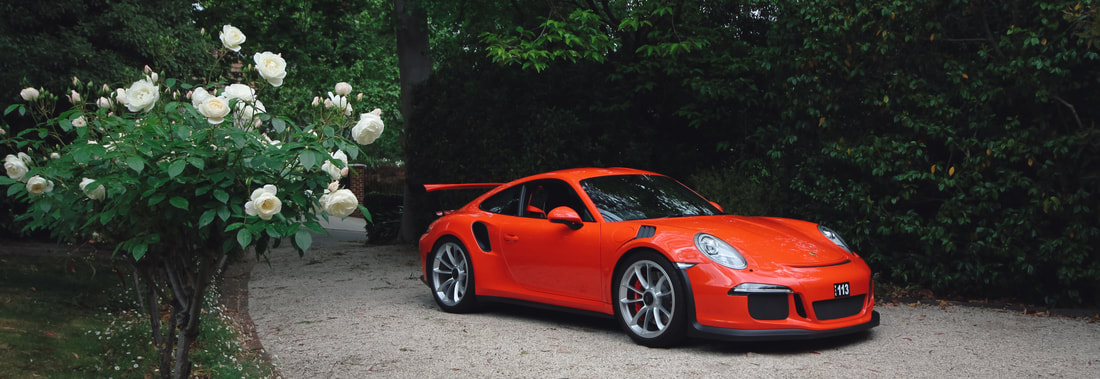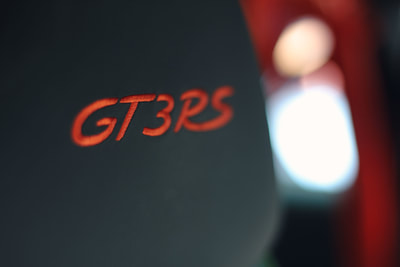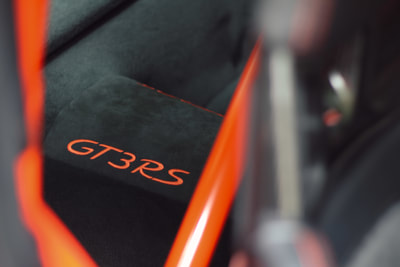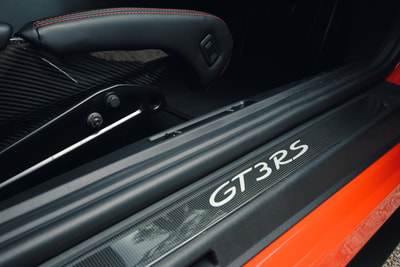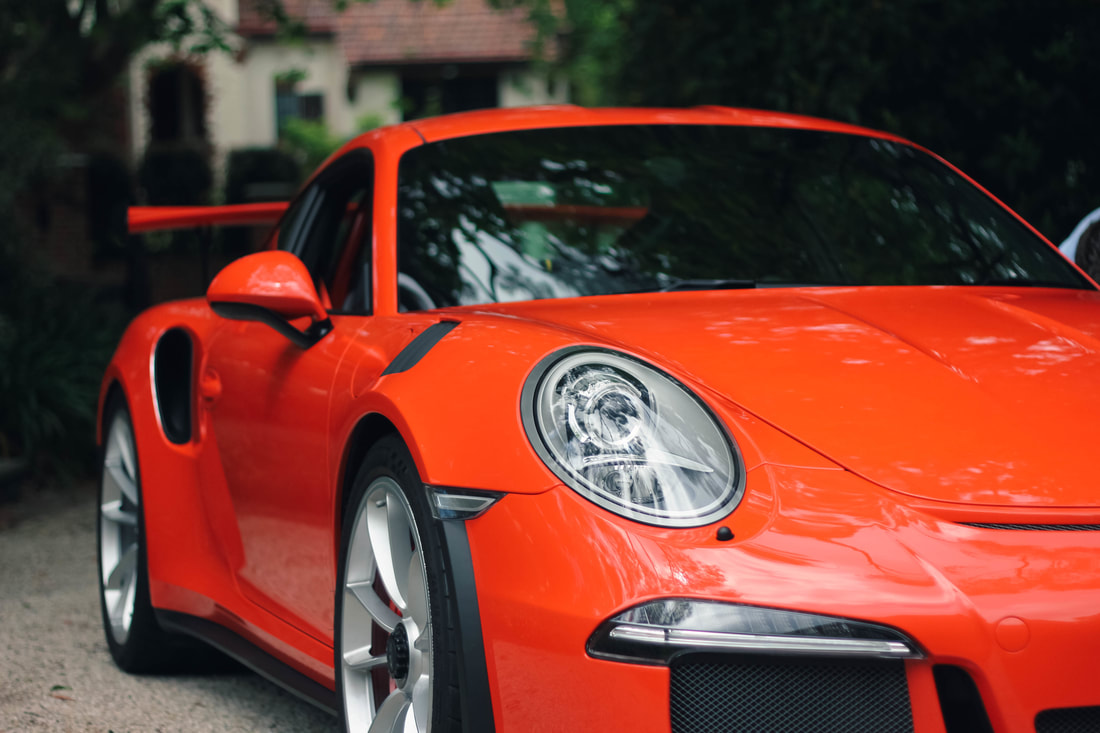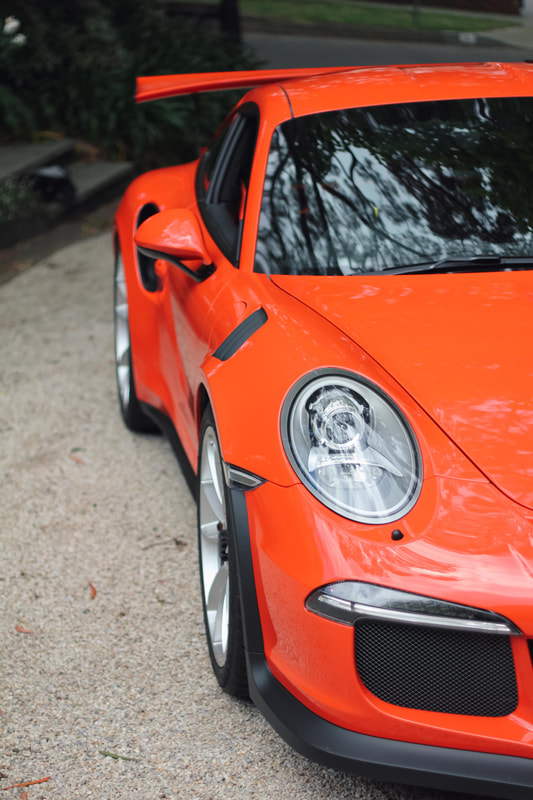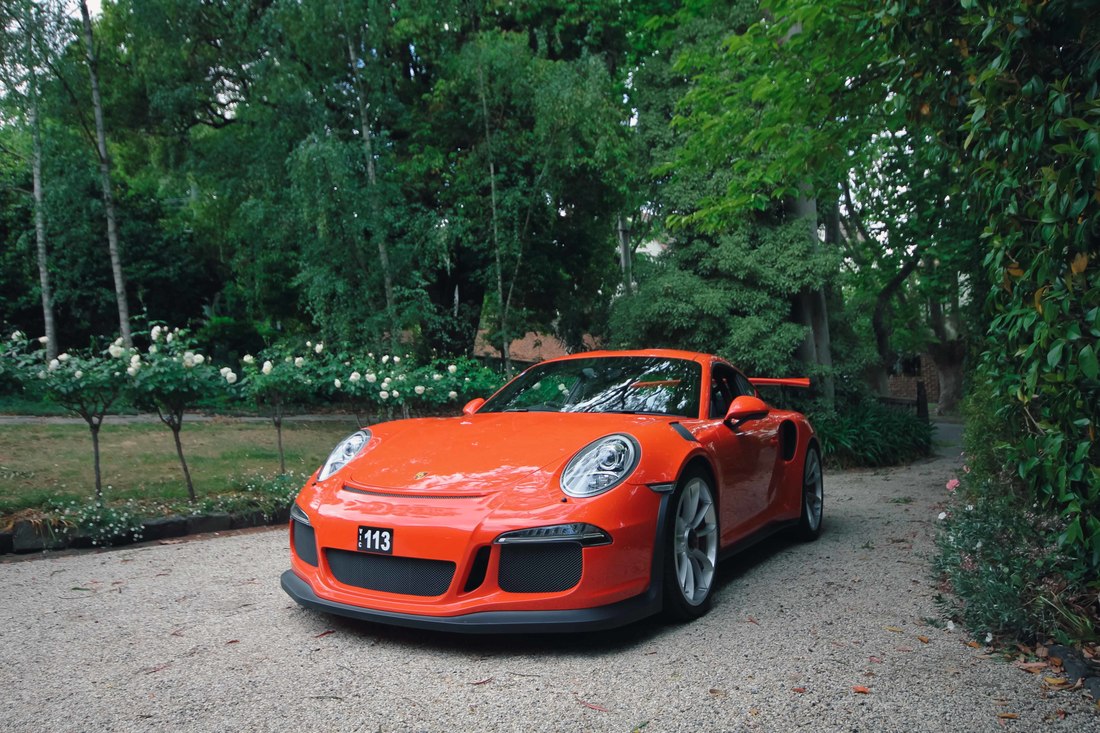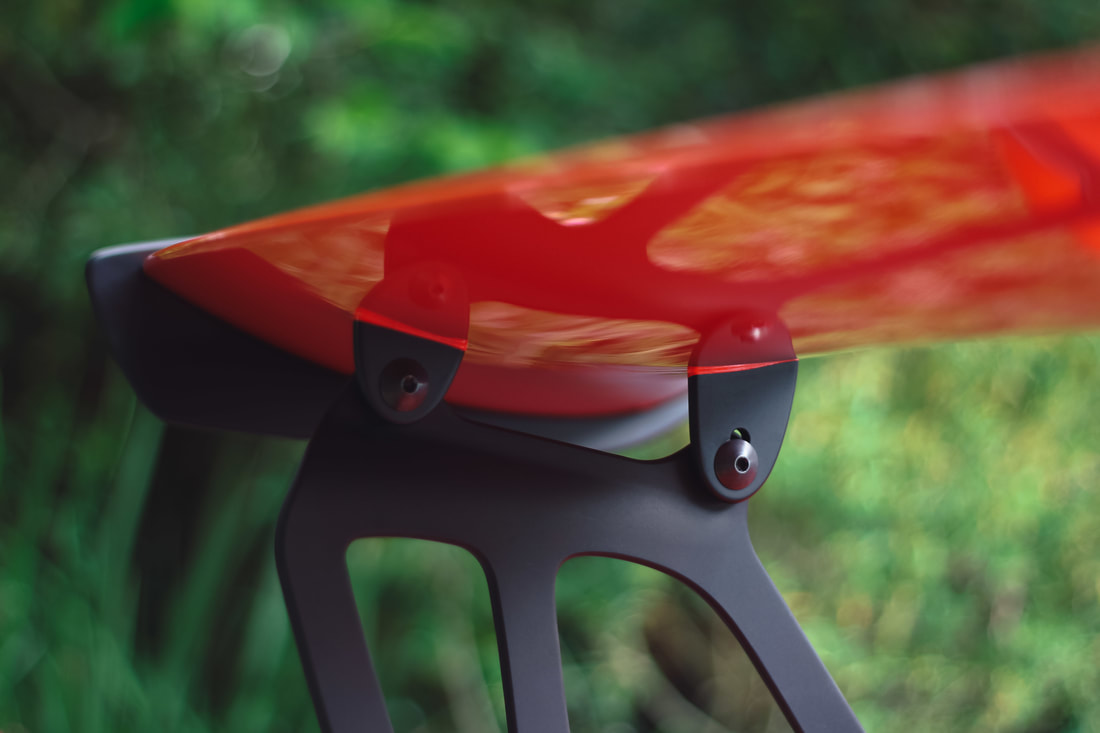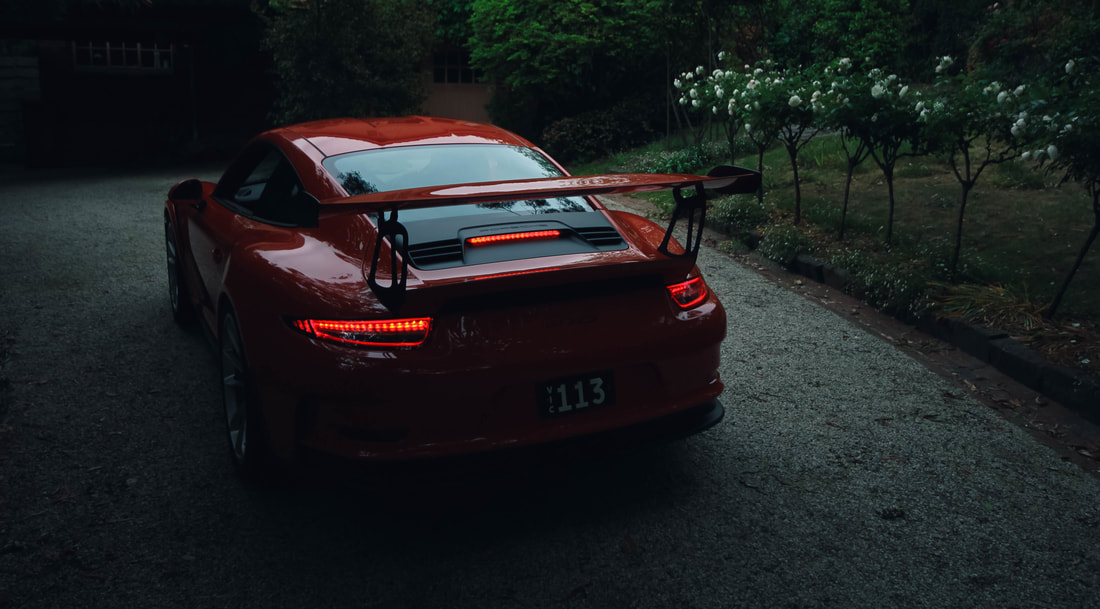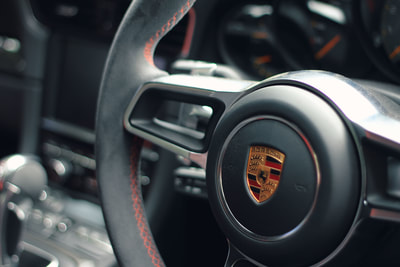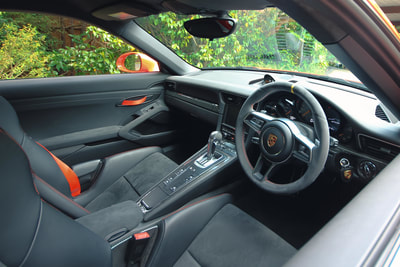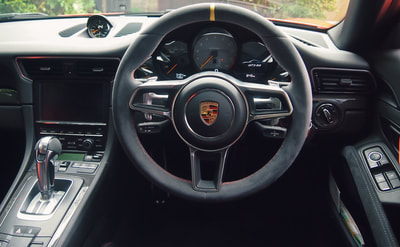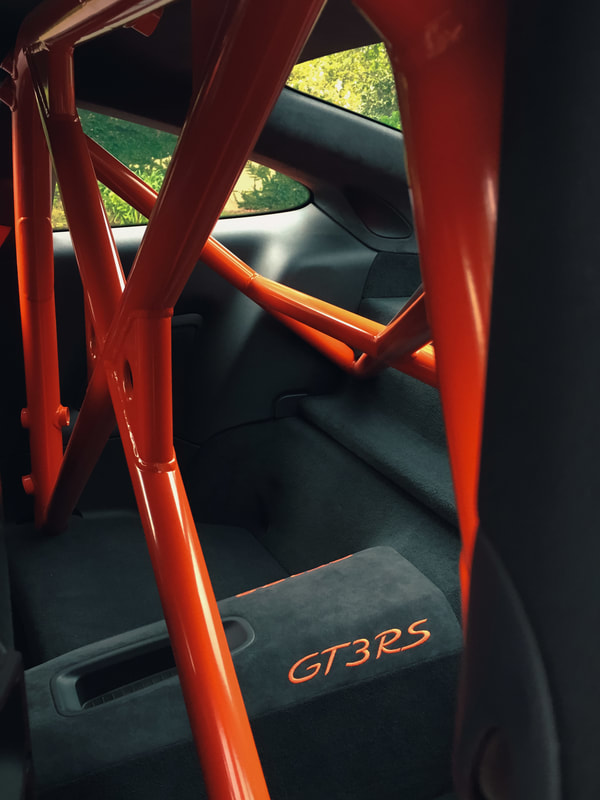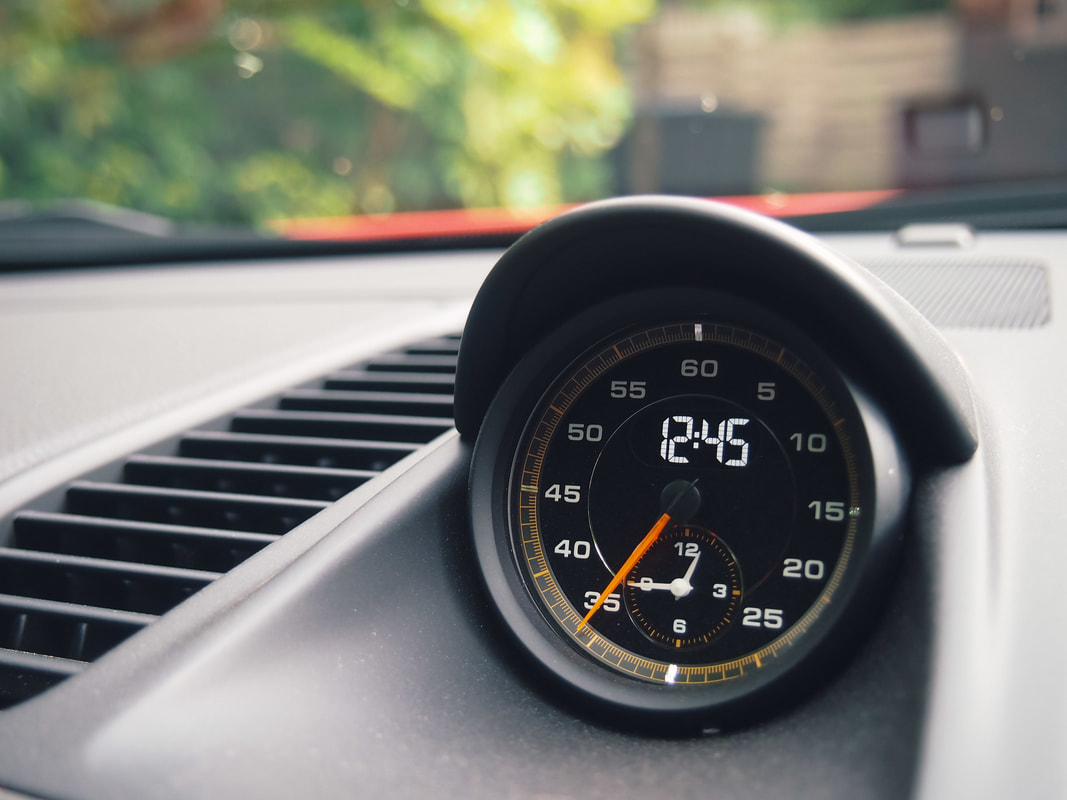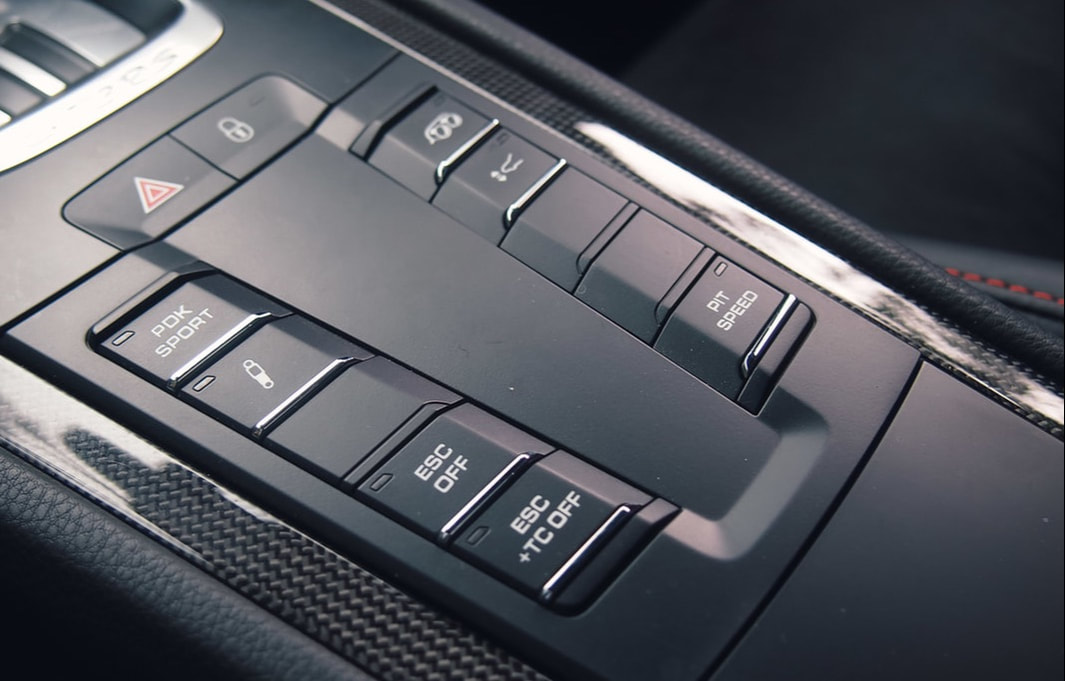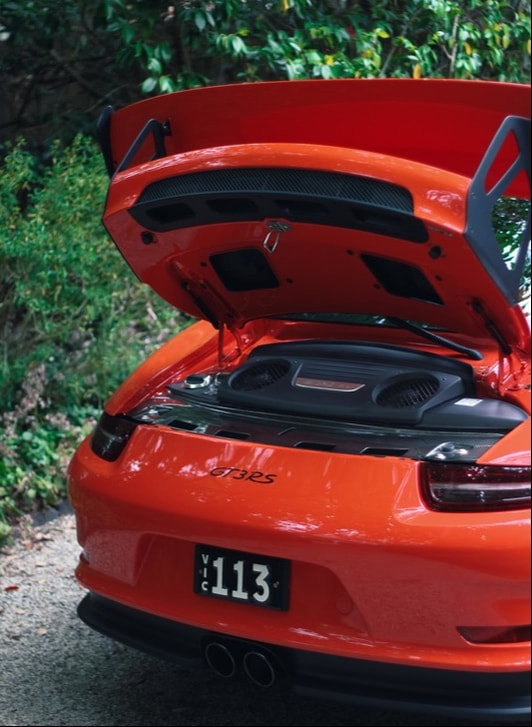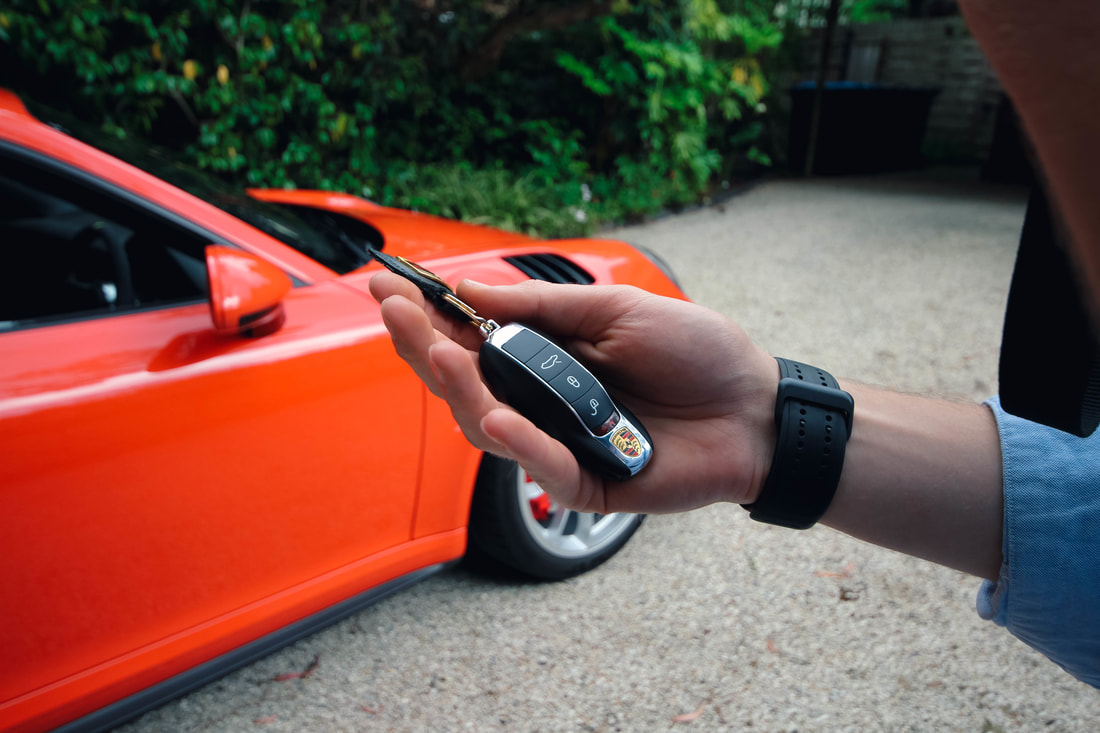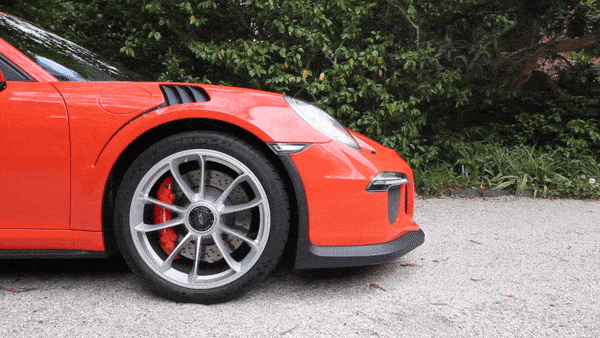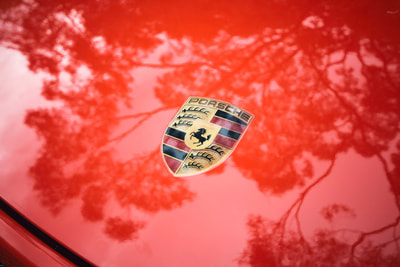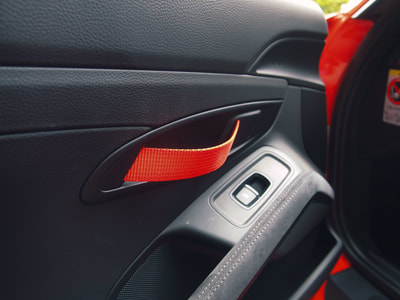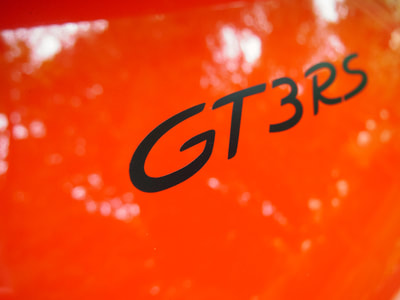|
If someone told you to imagine an orange supercar with a huge wing, rollcage, bucket seats, howling exhaust and an 8,800rpm redline, you might conjure a picture of one of Lamborghini's latest track specials. We'll stop you there, because today we're talking about none other than Porsche's 991-series 911 GT3 RS. Wait. A no-nonsense German wearing orange? That is correct, and beneath that eye-catching coat is a piece of mechanical and design brilliance that other big-name players in the supercar game envy. Before we get to the car in question, let's have a look at the RS family tree. The RS badge was first affixed to a 911 back with the legendary Carrera RS 2.7 in 1972. Since then, the badge has been the holy grail for Porsche 911 aficionados, collectors, and public admirers alike; auction prices more than confirm this allure. RS - standing for Rennsport (i.e. 'racing') - has since been adopted by other manufacturers to denote the cream of their crop: Ford's Focus RS and Audi's full RS range to name a couple, but it was Porsche to first adopt the naming convention. From the 2.7 RS, several evolutions have transpired, with obvious highlights including the 964 RS, the 993 & 997 GT3 RS's, 997 GT2 RS, with most recently the baton being handed over to the 'Ring King' 2018 991 GT2 RS. The RS badge has come a long way since its beginnings in 1972; the GT3 featured here has double the horsepower and half the 0-100km/h acceleration time of the RS of the 70s, not to mention decades of technological innovation packed into its magnesium and aluminium body. But does that mean that it's any less of a 'pure' driving experience? Quite the opposite, as we found out... Today's story really begins back in August when we bumped into the owner of this particular Porsche 911 GT3 RS at a local car show. As is so often the case among car folk, a long conversation ensued. To us of course, doing an exposé on such a rare piece of machinery seemed like a no brainer. And so, some weeks later, we found ourselves - one riding shotgun, the other struggling to keep up in the camera car - searching Melbourne's inner suburbs for a prime location for the shoot. With rain impending, we had to choose wisely - a cottage-like rose-lined driveway seemed ideal. We knew the Lava Orange would prove a challenge to shoot, and the true colour was indeed illusive. As with most cars of this lofty calibre, the 911 GT3 RS and indeed the shade of orange this one wears, really has to be seen to be appreciated. For now, our mediocre photos will have to do. The first thing that you notice when approaching the RS, apart from its colour, is the presence and stance that it has; in this case, akin to a resting tiger; it's totally calm sitting in a driveway, but can transform into an aggressive beast at a moment's notice. If 911s have ever been criticised for looking a bit... well, vanilla, this GT3 RS is anything but.
Every other orange GT3 RS in Melbourne has either black or dark grey wheels. We think the silver works brilliantly well. An option not found on this RS is the (somewhat controversial) clear tail lights, however in this instance the red tail lights blend in with the orange coat nicely. Our specific car bears the three-digit heritage numberplate [113], which really heightens the sophisticated impression the car radiates. This car was also one of the last to enter the country during the initial from-new factory orders, and has done some 7,000kms in less than a year, having seen its fair share of drive days across Victoria and even Tasmania; there's nothing better than seeing a supercar get used the way it's intended, being driven and enjoyed. Particularly one whose value is potentially on the up. We'll also add, it's seemingly been meticulously maintained, still in showroom condition. The only thing we could see showing wear were its tyres. It's those massive tyres (especially the rears at 32.5cm across) and wider track that contribute to its low-slung appearance. The body, actually taken straight from a 991 Turbo, is both wider and lower than other rear-wheel drive Porsches. As is often described (and is becoming a bit of a cliché), new performance cars of any budget have more than ever begun to focus on aerodynamics to get the most performance out of a car. Look no further than our previous post of the Mercedes AMG GT R; trick undercarriage aerodynamics, including rear diffuser and of course rear wing, lift the performance of the car to the next level. The RS is of course no exception, its rear wing one of the defining features of the car. Coupled with the deceptively delicate looking louvres on the front wheel arches to reduce the air pressure of the wheel well at high speed, front splitter to direct the air into the engine bay and clutch for cooling, and a recess running down the centre of the car from the hood's leading edge and over the roof, all contribute to 350kg of downforce pushing the rubber harder to the road for better cornering grip. The rear wing can be adjusted easily by the owner with an allen key - the setting in the photos is the less aggressive street mode, but the angle can be raked steeper for more downforce on track (at the cost of higher drag, and thus more visits to the petrol station when commuting). German-made is synonymous with a quality interior fit and finish, and the RS is absolutely no exception. Alcantara and carbon-fibre are commonplace in the RS's interior - when you're in a car with an Alcantara wheel, you know it means business. Compared with the AMG GT R, the RS interior feels simpler. There are no buttons on the steering wheel, and its open spokes give it a more light-weight feel. Indeed, this is reflected all over the interior, particularly with a narrower centre console and open cabin behind the seats. And it's no illusion - the RS weighs 1,434kgs, compared to the GT R's 1,615kgs.
you really need the support [of bucket seats] to avoid being pancaked against the door or ending up in your passenger's lap during aggressive change of direction. A gorgeous Sport Chrono clock dominates the centre of the dashboard - the sweeping second hand displaying the time, or laptime/stopwatch when on track. The multi-function screen sitting next to the central tachometer can display a whole host of information, too: maps, current and past laptimes, radio station, and in-car management are just a few of its functions. Encouragingly, Porsche has stuck with the analogue central tachometer and speedometer, unlike its Lamborghini counterparts. With an engine that revs out to 8,800RPM in a blink of an eye, it seems to be far smoother and more easily readable than a digital screen.
One of the more fun (yet less street friendly) features of the PDK is Launch Control. We're no strangers to seeing launch control on modern supercars; pull back and release both paddles at the same time, foot on the brake, mash the throttle and the system will hold the engine at 6,700rpm, then release the brake to enjoy the feeling an astronaut gets when launching a space shuttle! You should expect to hit the 100km/h mark in about 3.5 seconds... Rear-wheel steering is another performance-enhancing feature of the RS, adding to its already deep bag of tricks. Below 100km/h, the back wheels turn in the opposite direction to the front, giving it an effectively shorter wheelbase for easier navigation around your local Bunnings carpark. Above this speed, the wheels turn up to 1.5 degrees in the same direction, meaning that cornering is much more effective and your racing line improves. Centre-locking wheels also come as standard, which comes as good news for those with pneumatic wheel-guns at home. Nothing really says 'racecar' like centre-locking wheels, right? Gone are the days when supercars were a little rough around the edges. Today, mind-bending performance and everyday drive-ability are not mutually exclusive. Supercar manufacturers now benefit from having a substantial development budget compared to days past. Often they are bankrolled by parent companies. For example, Lamborghini is owned by Audi which is in turn owned by the Volkswagen group. In the case of Porsche, their popular (yet controversial among Porsche purists) SUVs have raked in unprecedented profits for the marque, which goes into funding some of their less profitable, low production offerings. The other benefit of making family SUVs is that many welcome components and 'convenience' technologies can now be found in their dedicated sports cars. True, this is not seen as a good thing by all - again, we feel for the Porsche purists amongst us. But it sure makes the Sunday morning run to the shops a much more forgiving journey. If you want to feel like your supercar is trying to kill you, few cars from this decade will satisfy (you could maybe buy a V12 Lamborghini, they tend to catch fire from time to time). Also of note, the ample boot space - we were surprised to find that lifting the bonnet revealed a deep compartment for generous stowage. It's obviously no grocery getter, but the GT3 RS is perhaps more accommodating than you might expect.
After scratching our heads over why the lift kit wouldn't deactivate for our photos, we discovered that the car's doors need to be closed. In hindsight this makes a lot of sense - we can think of little worse than hearing the air hiss out of the airbags followed by a crunch as your door hits a gutter. Again, Porsche has taken weight reduction to the nth degree with the GT3 RS; just take its badges for example. There aren't any! Instead, the Porsche emblem on the bonnet and GT3 RS lettering on the boot are both stickers. There's also no traditional interior door handles. Rather, a quick tug on a strap opens the door. The side and rear windows are filled with polycarbonate rather than glass. The magnesium roof is a 1kg saving had they used carbon-fibre. Some of the more substantial weight saving measures are hidden - a titanium exhaust system saves 4kg. That's a large sack of (very expensive) potatoes! We end our article with a discussion; has technology meant that supercars are becoming less enjoyable, considering that the driver seems to be less involved? There's no doubt that the supercars of today aren't like they were yesteryear - driver involvement has reduced dramatically, and may even disappear entirely in the not too distant future (to the dismay of car enthusiasts the world over). It would be easy to criticise the RS as being too comfortable, or too luxurious to be a true driver's car. But the brilliance lies in it's ability to transform at the mere push of a button; sure, leave the exhaust in quiet mode, transmission in sublime automatic, and suspension in supple mode when cruising around town. But as soon as you hit a windy stretch of road, it's as simple as dropping the windows, turning off the radio, pushing a few buttons, and you've got your driver's car ready and waiting. Let us know your thoughts on the GT3 RS below. Thank you very much to the kind owner of this gorgeous machine, too. MCS Factfile: Arrangement/no. cylinders & aspiration: flat-six (boxer), naturally aspirated Displacement: 4.0L (3996cc) Power: 368kW Torque: 460Nm at 6250rpm Driven wheels: rear-wheel drive Transmission: PDK 0-100km/h: 3.3s Top speed: 310km/h Kerb weight: 1434kg Australian retail: $387,300 (before on-roads) If you've got an interesting car of any sort and would like an article written on it, let us know! Contact us for more information.
Comments
|

